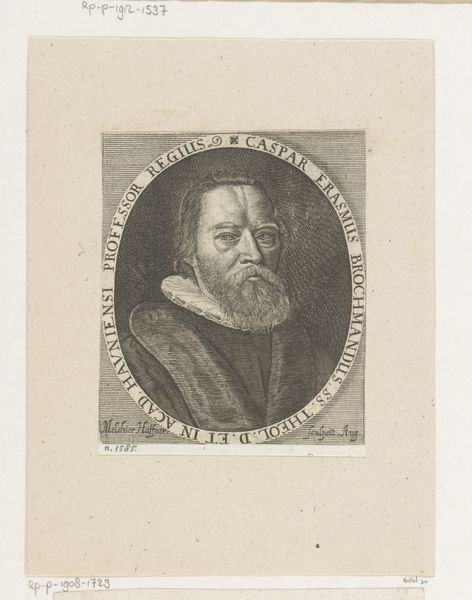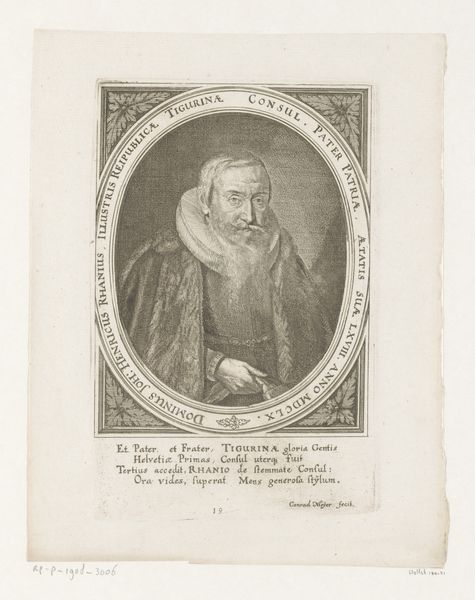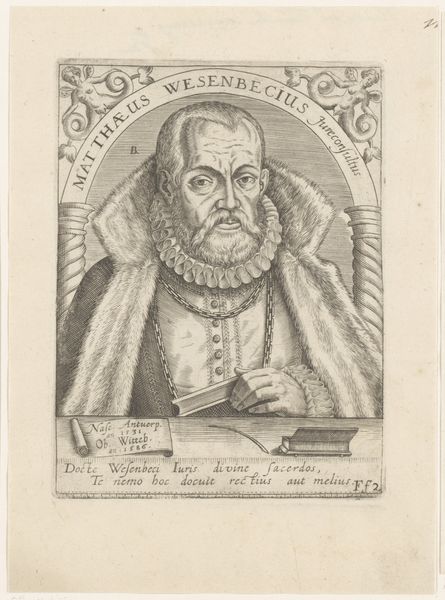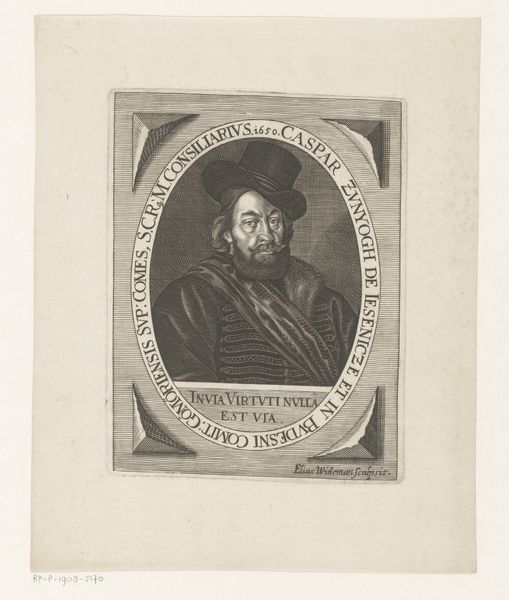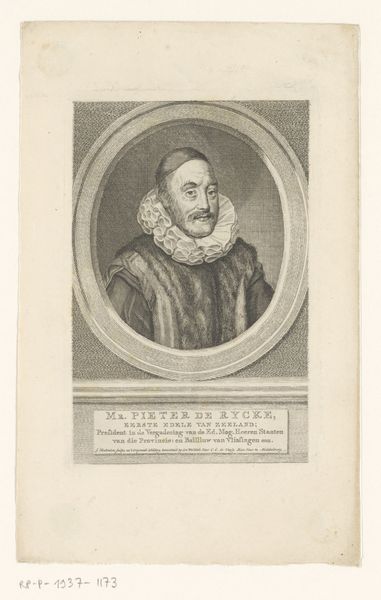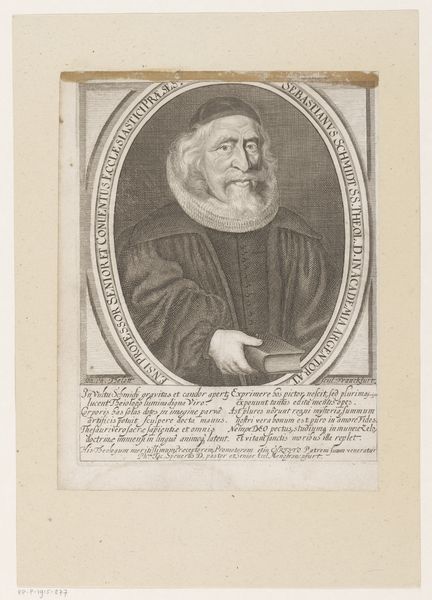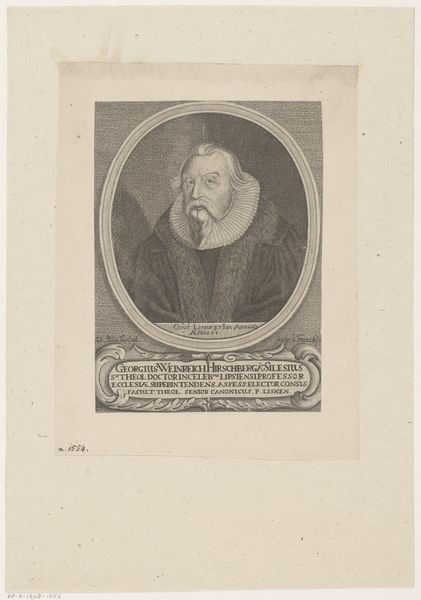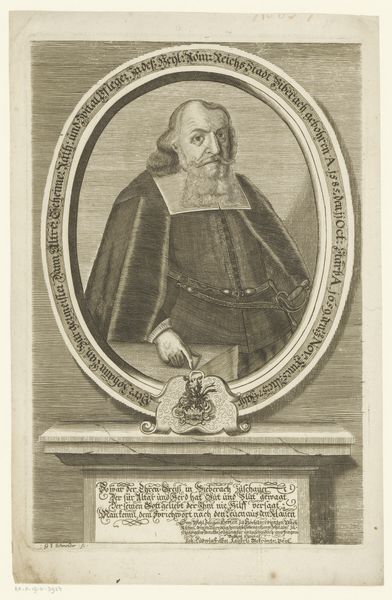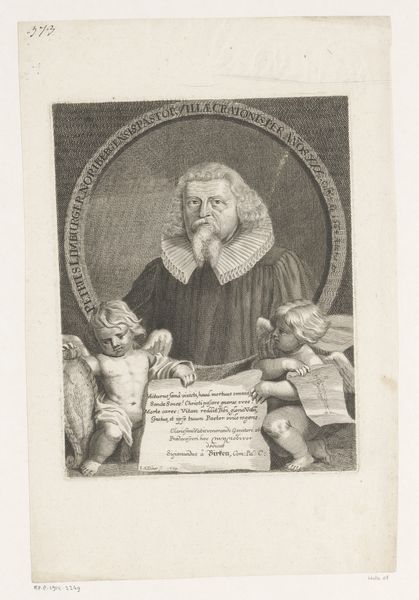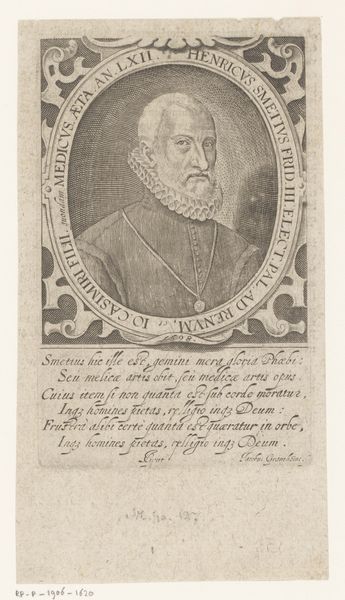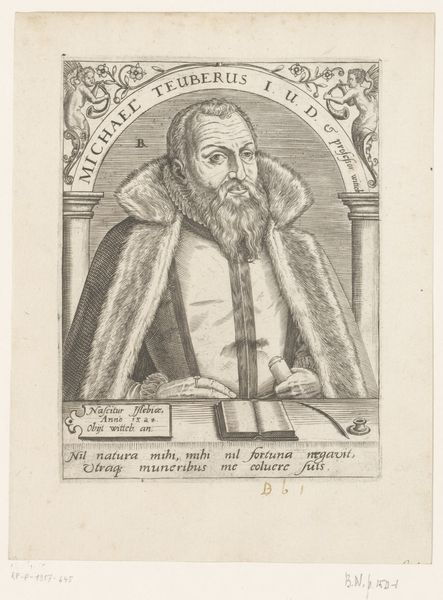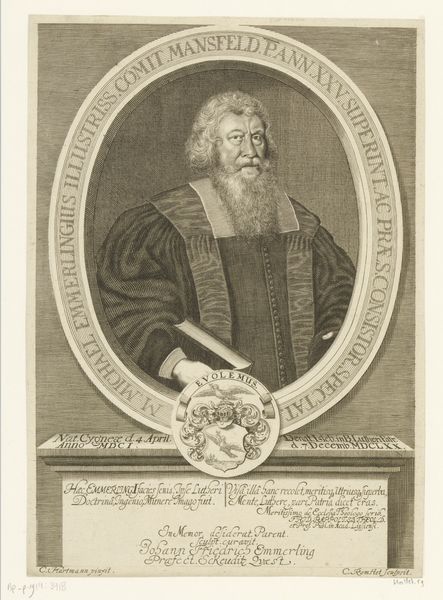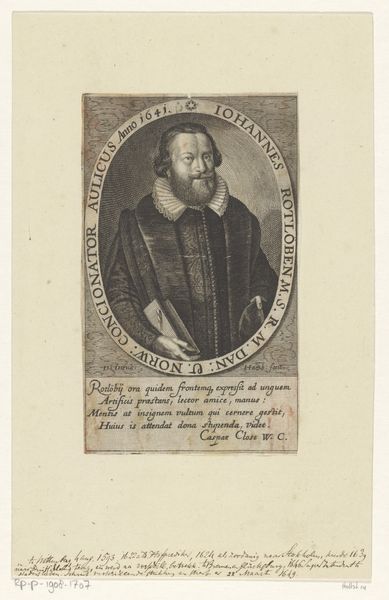
print, etching, engraving
#
portrait
#
baroque
# print
#
etching
#
old engraving style
#
pencil drawing
#
history-painting
#
engraving
Dimensions: height 191 mm, width 119 mm
Copyright: Rijks Museum: Open Domain
Editor: Here we have Michael Fennitzer's "Portret van Justinus Müllner," an etching or engraving, placing it somewhere between 1651 and 1702. It feels very formal, austere even. What historical currents do you think influenced a work like this? Curator: That formality speaks volumes. Consider the context: 17th-century Europe, still reeling from the Reformation and the rise of scientific rationalism. Portraiture was a powerful tool for solidifying social standing, particularly for learned men like Müllner, a doctor. But how do you think that the act of memorializing him through print complicates our understanding? Editor: That's interesting...because a print allows for wider circulation and potentially a broader impact than, say, a unique painted portrait. Curator: Exactly! It democratizes the image, in a way. Who had access to images then? And how might Fennitzer be using Müllner’s image to convey particular ideas about knowledge, authority, or even the burgeoning field of medicine itself? Notice the books at the bottom of the portrait. What statements do these things make about the relationship between image, knowledge, and power? Editor: I hadn't thought of the books that way. They do lend a certain gravity...almost like props legitimizing his intellect and societal position. Is it unusual for Baroque-era portraits to include such symbolic objects? Curator: The inclusion isn't unusual, but the emphasis on accessible knowledge through printed imagery is something worth noting. Baroque art is often about grand spectacle and overt displays of power. In contrast, the etching's relative accessibility speaks to a shifting power dynamic – a challenge to traditional hierarchies. I think a close reading can highlight how identity is tied to visual and material culture of its period. Editor: It's amazing how a seemingly straightforward portrait can reveal so much about the social landscape of its time. I'll never look at Baroque art the same way. Curator: Nor will I! I’ll be questioning accessibility in relation to similar works going forward. Thank you.
Comments
No comments
Be the first to comment and join the conversation on the ultimate creative platform.
